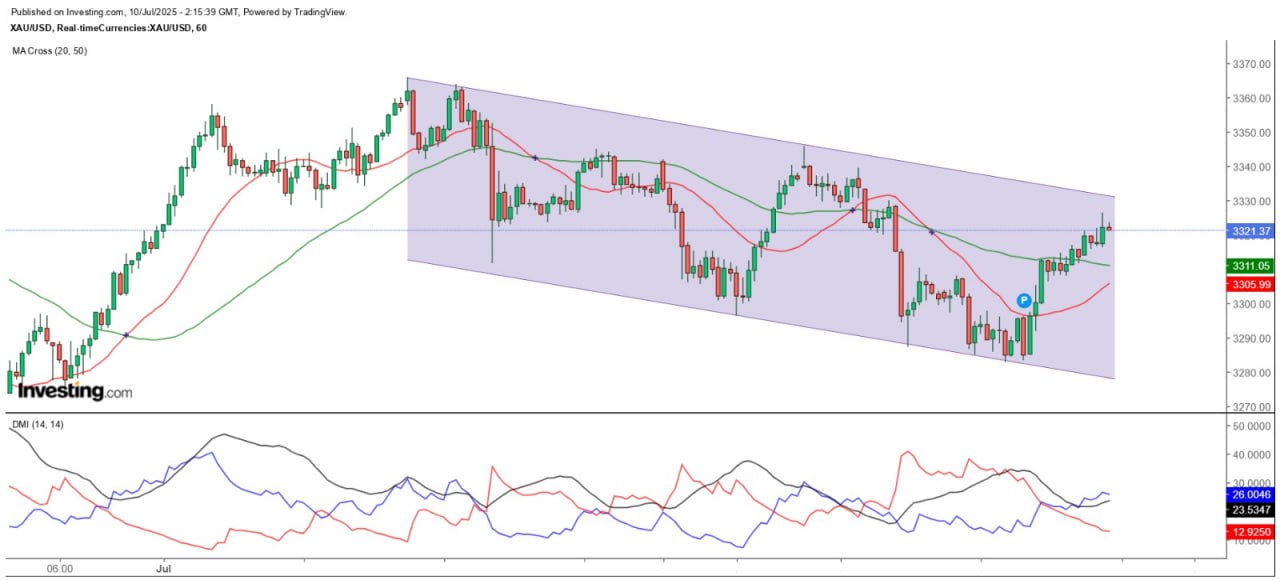The gold price maintained a pattern of repeated decline
"Gold Price Maintains Repeatedly Falling Pattern" 10/7 10:15 am Completed
Yesterday, Trump sent tariff letters to six countries including the Philippines, Moldova, Brunei, Algeria, Libya and Iraq, with the highest rate reaching 30%. Trump said that the tariffs on goods from Moldova, Iraq and Libya were lower than those announced in early April, while the rates on goods from the Philippines and Brunei were higher. As Trump made it clear that he would not extend the August 1 trade agreement deadline, India is in serious negotiations with the US to reach a trade deal, and EU officials are also in talks with the US to seek a balanced agreement. In addition, Trump warned that BRICS countries would face an additional 10% tariff, and he also threatened to impose a 50% tariff on copper products and a 200% tariff on imported drugs.
The chance of the Federal Reserve cutting interest rates in July is slim.
In addition, the minutes of the US Federal Reserve's June monetary policy meeting released yesterday showed that the impact of tariffs on inflation was the reason for the officials' divergent views on the interest rate outlook. A few officials supported a rate cut in July, while most were concerned about the inflationary pressure brought by the tariff policy. Some even believed that there was no need to cut interest rates this year. The minutes also showed that the participants believed there was "considerable uncertainty" about the timing, magnitude and persistence of the impact of tariffs on inflation. Although a few participants pointed out that tariffs would lead to one-off price increases and would not affect long-term inflation expectations, most participants believed that tariffs could have a more lasting impact on inflation.
Moreover, some officials also believe that the current inflation is still far from the 2% target - even without the tariffs having a greater impact in the coming months, it is not enough to support a rate cut. Records show that some policymakers indicated that they were willing to consider supporting a rate cut at the July meeting, and most policymakers believed that a moderate rate cut this year might be appropriate.
The 50-day moving average remains a significant resistance.
After the gold price broke through the $3,300 mark yesterday, it did not plummet as expected to $3,258. Instead, it stabilized at $3,280 and continued to rise. By the early Asian session today, it had returned above $3,325. However, from the hourly chart, the gold price is still in a balanced downward channel, and whether it can break through upward remains to be seen. From the daily chart, after the gold price broke through the 50-day SMA ($3,323.6) with a bearish engulfing pattern on Tuesday, yesterday's rebound still failed to close above this line, indicating that the 50-day SMA remains a significant resistance. In the early Asian session today, it is still struggling near the 50-day SMA. Therefore, for a re-deployment of long positions, the gold price must close above $3,346 in the future.
In the short term, the top of the hourly chart's downtrend channel at around $3,330.5 is regarded as the first major resistance for the day. Before gold breaks above the previous rebound high of $3,345.9, the price remains in a downtrend. It is not advisable to chase the price too high before a significant breakthrough. It is estimated that the gold price will fluctuate between $3,280 and $3,330. It is recommended to adopt a strategy of selling at higher levels and buying at lower levels within the aforementioned range based on technical signals.
The above content is for reference only and does not constitute investment advice.
MTF Special Analyst Zheng Guangfu
Previous Article Next Article


 Whatsapp
Whatsapp Telegram
Telegram
